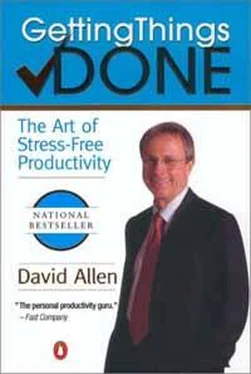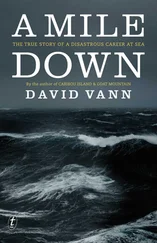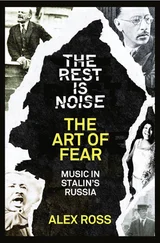Have you clarified the primary purpose of the project and communicated it to even one who ought to know it? And have you agreed on the standards and behaviors you'll need to adhere to to make it successful?
Have you envisioned success and considered all the innovative things that might result if you achieved it?
Have you envisioned wild success lately?
Have you gotten all possible ideas out on the table— everything you need to take into consideration that might affect the outcome?
Have you identified the mission-critical components, key milestones, and deliverables?
Have you defined all the aspects of the project that could be moved on right now, what the next action is for each part, and who's responsible for what?
If you're like most people I interact with in a coaching or consulting capacity, the collective answer to these questions is, probably not. There are likely to be at least some components of the natural planning model that you haven't implemented.
In some of my seminars I get participants to actually plan a current strategic project that uses this model. In only a few minutes they walk themselves through all five phases, and usually end up being amazed at how much progress they've made compared with what they have tried to do in the past. One gentleman came up afterward and told me, "I don't know whether I should thank you or be angry. I just finished a business plan I've been telling myself would take months, and now I have no excuses for not doing it!"
You can try it for yourself right now if you like. Choose one project that is new or stuck or that could simply use some improvement. Think of your purpose. Think of what a successful outcome would look like: where would you be physically, financially, in terms of reputation, or whatever? Brainstorm potential steps. Organize your ideas. Decide on the next actions. Are you any clearer about where you want to go and how to get there?
The Unnatural Planning Model
To emphasize the importance of utilizing the natural planning model for the more complex things we're involved with, let's contrast it with the more "normal" model used in most environments—what I call unnatural planning.
When the "Good Idea" Is a Bad Idea
Have you ever heard a well-intentioned manager start a meeting with the question, "OK, so who's got a good idea about this?"
What is the assumption here? Before any evaluation of what's a "good idea" can be trusted, the purpose must be clear, the vision must be well defined, and all the relevant data must have been collected (brain stormed) and analyzed (organized). "What's a good idea?" is a good question, but only when you're about 80 percent of the way through your thinking! Starting there would probably blow anyone's creative mental fuses.
If you're waiting to have a good idea before you have any ideas, you won't have many ideas.
Trying to approach any situation from a perspective that is not the natural way your mind operates will be difficult. People do it all the time, but it almost always engenders a lack of clarity and increased stress. In interactions with others, it opens the door for egos, politics, and hidden agendas to take over the discussion (generally speaking, the most verbally aggressive will run the show). And if it's just you, attempting to come up with a "good idea" before defining your purpose, creating a vision, and collecting lots of initial bad ideas is likely to give you a case of creative constipation.
Let's Blame Mrs. Williams
If you're like most people in our culture, the only formal training you've ever had in planning and organizing proactively was in the fourth or fifth grade. And even if that wasn't the only education you've had in this area, it was probably the most emotionally intense (meaning it sank in the deepest).
Mrs. Williams, my fourth-grade teacher, had to teach us about organizing our thinking (it was in her lesson plans). We were going to learn to write reports. But in order to write a well-organized, successful report, what did we have to write first? That's right - an outline!
Outlines were easy, as long as you wrote the report first.
Did you ever have to do that, create an outline to begin with? Did you ever stare at a Roman numeral I at the top of your page for a torturous period of time and decide that planning and organizing ahead of time were for people very different from you? Probably.
In the end, I did learn to write outlines. I just wrote the report first, then made up an outline from the report, after the fact.
That's what most people learned about planning from our educational system. And I still see outlines done after the fact, just to please the authorities. In the business world, they're often headed "Goals" and "Objectives." But they still have very little to do with what people are doing or what they're inspired about. These documents are sitting in drawers and in e-mails some-where, bearing little relationship to operational reality.
The Reactive Planning Model
The unnatural planning model is what most people consciously think of as "planning," and because it's so often artificial and irrelevant to real work, people just don't plan. At least not on the front end: they resist planning meetings, presentations, and strategic operations until the last minute.
But what happens if you don't plan ahead of time? In many cases, crisis! ("Didn't you get the tickets? I thought you were going to do that?!") Then, when the urgency of the last minute is upon you, the reactive planning model ensues.
When you find yourself in a hole, stop digging.
— Will
What's the first level of focus when the stuff hits the fan? Action! Work harder! Overtime! More people! Get busier! And a lot of stressed-out people are thrown at the situation.
Then, when having a lot of busy people banging into each other doesn't resolve the situation, someone gets more sophisticated and says, "We need to get organized!" (Catching on now?) Then people draw boxes around the problem and label them. Or redraw the boxes and relabel them.
At some point they realize that just redrawing boxes isn't really doing much to solve the problem. Now someone (much more sophisticated) suggests that more creativity is needed. "Let's brainstorm!" With everyone in the room, the boss asks, "So, who's got a good idea here?" (Thank you, Mrs. Williams.)
Don't just do something. Stand there.
—Rochelle Myer
When not much happens, the boss may surmise that his staff has used up most of its internal creativity. Time to hire a consultant! Of course, if the consultant is worth his salt, at some point he is probably going to ask the big question: "So, what are you really trying to do here, anyway?" (vision,purpose).
The reactive style is the reverse of the natural model. It will always come back to a top-down focus. It's not a matter of whether the natural planning will be done—just when, and at what cost.
Natural Planning Techniques: The Five Phases
It goes without saying, but still it must be said again: thinking in more effective ways about projects and situations can make things happen sooner, better, and more successfully. So if our minds plan naturally anyway, what can we learn from that? How can we use that model to facilitate getting more and better results in our thinking?
Let's examine each of the five phases of natural planning and see how we can leverage these contexts.
Purpose
It never hurts to ask the "why?" question. Almost anything you're currently doing can be enhanced and even galvanized by more scrutiny at this top level of focus. Why are you going to your next meeting? What's the purpose of your task? Why are you having friends over for a barbeque in the backyard? Why are you hiring a marketing director? Why do you have a budget?
Читать дальше











